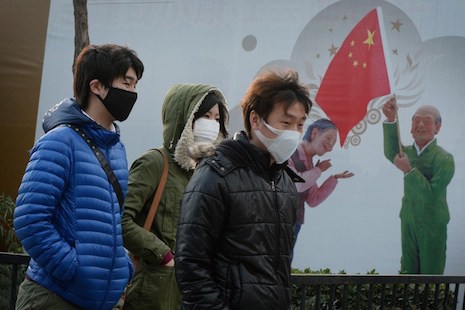Through Dalai Lama, one rediscovers Buddhism
Krishna Kumar, Hindustan Times | April 22, 2016
Many school textbooks of the 1950s referred to the Himalayas as a wall. This metaphor reflected both the state of common knowledge about the Himalayan world at the time and popular indifference to the region. The situation suddenly changed in 1959, when the Dalai Lama, then a young man of 24, escaped from Lhasa and sought refuge in India. Thousands of Tibetans followed him and the influx continued for decades. China’s steadfast disapproval of India’s stand and role matched the Dalai Lama’s resolve to maintain a government-in-exile to serve his people. Five years ago, he decided to hand over the task of active governance to an elected head, the Sikyong or the prime minister. Last month, the Tibetan community in exile participated in this election for a second time, retaining the incumbent. The election process aroused worldwide interest, and some criticism too as one might expect in our era of social media, which permits every single image and comment to gain significance by going viral.
The Tibetan presence in India has made a deep impact on our perception of the Himalaya region and its relationship with us. From being a wall that only an adventurer scholar like Rahul Sankrityayana could penetrate, the region has become a resource, both for economics and imagination. His commitment and energy enabled him to transport thousands of Buddhist manuscripts into India, saving them from the fury that the Cultural Revolution had released in China. A great Hindi writer and scholar of history and ancient languages, Sankrityayana was a Marxist who believed in freedom to seek the truth. The manuscripts he salvaged are now serving as a precious resource for research at the Tibetan University in Sarnath, Varanasi. This institution is one of the many academic enterprises that the Tibetan government in exile has successfully nourished despite the countless constraints under which it works.
No matter which area of public policy we look at, the Tibetan administration has pursued an agenda of community welfare with remarkable clarity. The financial resources available are limited to the small tax members of the community pay, in addition to the grants received from donors. The Tibetans have set an example of frugal, efficient use of money without a hint of corruption. Their schools in the recent past initiated a major project to improve pedagogic practices in key areas such as reading. A long-term project to enable nuns to achieve the highest levels of education in Buddhist philosophy has been pursued at the Dolma Ling nunnery in Dharmsala. The first batch of nuns, who have completed a 17-year course in Buddhist philosophy, will receive the Geshema degree, i.e. a doctorate, later this year. This will mark a new era in the history of Buddhism. The vocational education programme at Norbulingka Institute is one of the best I have seen anywhere in the area of heritage crafts. In health, the administration has revived the ancient Tibetan medical system, making its curative powers available to the wider public within India and in several other countries. One could go on and on, because the list is long and its contents largely unsung and, therefore, unknown in our age of loud-mouthed propaganda.
It goes without saying that the Dalai Lama’s presence in India as the leader of the community provides an explanation for the coherent and purposeful life it has led for over half a century without frustration. His vision of non-violent struggle for dignity and justice forms a key factor of the positive side of the Tibetan story. Sadly, China does not agree and uses an exclusively nationalist political frame to view the Dalai Lama’s work. As a unique story of our times, the Tibetan refusal to dissolve and merge will undoubtedly unfold further. Those who see it in purely political terms, nationally or internationally, miss the deeper ripples it has caused. Religion is a major site of conflict in the world today, and the Dalai Lama has gently reduced the pitch and volume of religious debates. His personal scholarship permits us to separate the Buddha from Buddhism. This is a pedagogic revolution. One can now learn from a great teacher who lived more than two millennia ago without getting stuck in the doctrinaire debates that virtually shrouded his method of analysing the problems of life. China is currently rediscovering Confucius; if it can control its political instincts, it can rediscover the Buddha too by paying attention to the Dalai Lama’s scholarly work.
This may not be such a fantasy as it looks, for every nation today needs a larger perspective to contemplate the problems it is facing. As a stateless leader and thinker, the Dalai Lama stretches the prevailing notions of citizenship. I am not referring to the schlock of global citizenship, but rather to the gap that has developed between the idea of a human being and a citizen. The French philosopher Rousseau had noted the likelihood of this gap growing with the spread of education under the state’s control. We can see in almost any corner of the world, including ours, how major a contribution education makes to the nourishment of general cussedness and indifference to the common good. The small presence of the Tibetan people in India, held together by a splendid teacher, has demonstrated that collective life can be sustained without contest and strife. It is not merely patience and extreme parsimony that the Tibetans have practised amidst us; they have also practised dignity without power. It has been a strange phenomenon to witness. It can offer unexpected insights if we, and other nations — including those in our neighbourhood — agree to study it with interest and humility.
Krishna Kumar is professor of education at Delhi University and former director NCERT
The views expressed are personal



